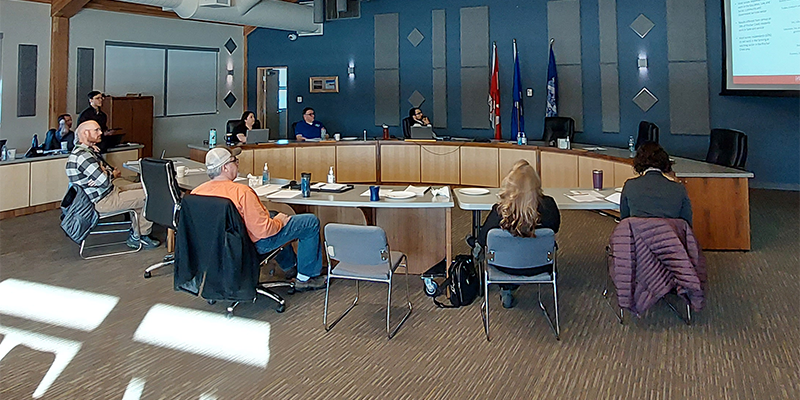As the Municipal Climate Change Action Centre marks the official closure of the Climate Resilience Capacity Building (CRCB) Program, we are looking back at some of the program results and successes.
Over a period of two years, funding provided by the Government of Alberta has enabled local governments to strengthen their climate adaptation capacity and knowledge and set them on a path to building a more climate resilient future for their communities.
A total of 49 climate adaptation projects were completed reaching 66 municipalities and Indigenous communities across the province. In addition, representatives from 37 local governments participated in networking and knowledge sharing through meetings of the CRCB Program Community of Practice.
CRCB Lessons Learned
By completing their climate risk and vulnerability assessments or climate adaptation and resilience plans, these communities have gained valuable knowledge on the strategies required to launch climate adaptation projects, build support, communicate effectively, and implement solutions.
We asked participants to share a piece of advice for other local governments. Here are their suggestions to prepare for, approach, and sustain momentum for climate adaptation initiatives.
Community Engagement and Communication
- Build relationships and start with a foundation of trust and respect.
- Engage community members early and often to improve the quality and relevance of the project.
- Engage diverse knowledge holders and integrate climate science with local and traditional knowledge and expertise.
- Communicate using accessible language, through multiple channels.

Internal Buy-In
Before launching a climate adaptation initiative, securing strong internal buy-in is essential. Gaining support from key departments, senior managers, and leaders ensures the project’s success and increases the likelihood of its recommendations being implemented. The following approaches can help effectively engage decision-makers and garner support:
- Broaden the conversation. Communicate climate co-benefits like affordability, economic stability, community well-being, and safety to foster support.
- Leverage existing efforts. Make connections between climate initiatives and work, policies, and plans already in use.
- Make the business case. Clearly outline the urgency and financial and strategic advantages of climate adaptation initiatives.
- Prepare for action. Create a list of shovel-ready projects and monitor grant opportunities.

Diverse Perspectives
Municipal staff and leaders bring local knowledge with deep expertise in their respective fields. Participants suggest that, wherever possible, staff from various departments across the organization should be invited to contribute their perspectives. They also highlight innovative approaches for bringing together the perspectives of staff, leaders, and community members.
- Identify key departments and individuals within your organization that need to be involved before starting the project.
- Leverage the diverse expertise and experience of staff from multiple departments.
- Consider establishing a task force or committee model to engage staff, council, and the public in decision making.
- Empower specific employees to champion the initiative.

Collaboration and Knowledge Sharing
Fostering collaboration and knowledge sharing is key to building relationships, gaining new ideas, and enhancing the project’s impact. Participants shared approaches to advancing partnerships at local and regional levels.
- Emphasize regional and intermunicipal collaboration to address shared goals.
- Network and share knowledge with others in the sector to build connections and work towards shared goals.
- Build relationships with a diverse range of stakeholders, businesses, and community organizations to leverage their knowledge and expertise.

Implementation
To sustain momentum, participants shared strategies to overcome challenges and maximize the benefits for climate adaptation initiatives within their organizations.
- Integrate adaptation to other municipal planning processes (i.e., Municipal Development Plan or Environmental Stewardship Plan).
- Build off the success of previous actions.
- Take incremental steps towards actions and showcase successes along the way.
- Prioritize actions that offer multiple benefits.
Learn more about the CRCB program results on the legacy program page.
We thank all communities for their participation and contributions to the CRCB Program and Community of Practice and we look forward to future opportunities to sustain the connections and share the knowledge developed through this program. We also offer our thanks to the Government of Alberta for funding this initiative.








You must be logged in to post a comment.